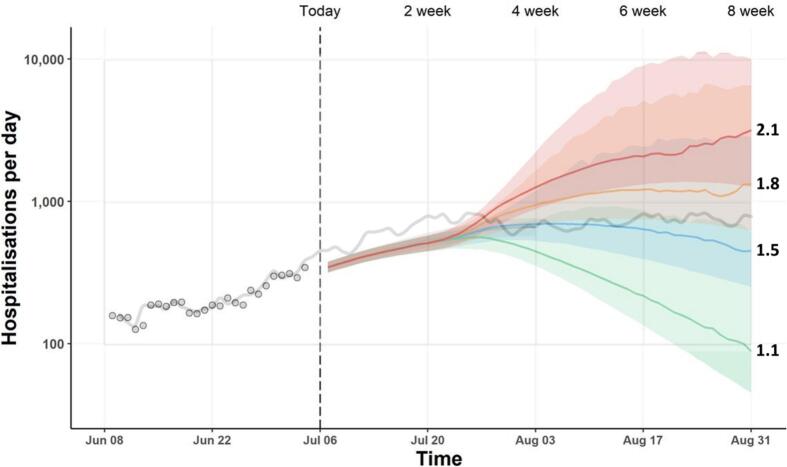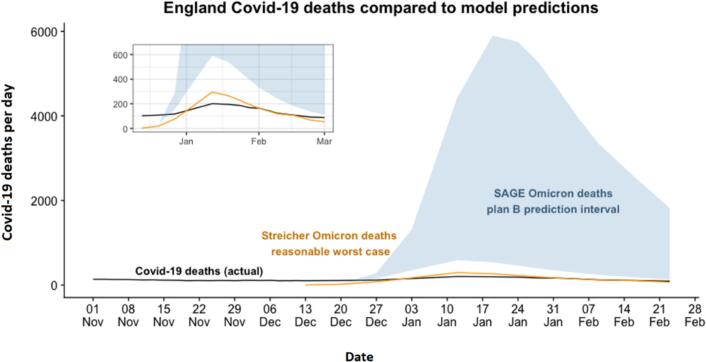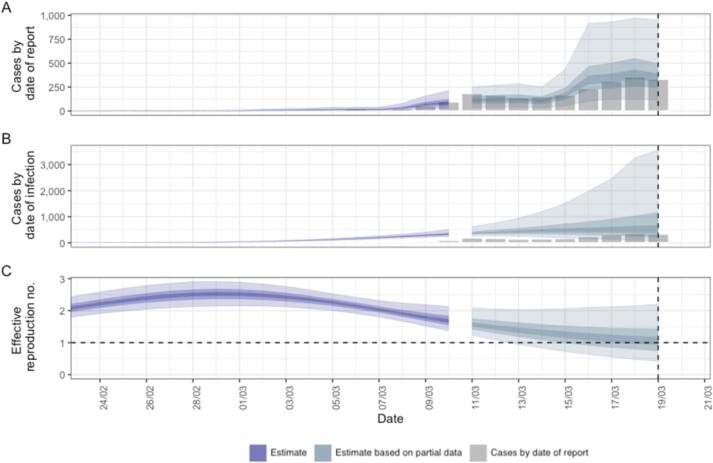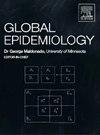The need for methodological pluralism in epidemiological modelling
引用次数: 0
Abstract
During the Covid-19 pandemic, the best-performing modelling groups were not always the best-resourced. This paper seeks to understand and learn from notable predictions in two reports by the UK's Scientific Advisory Group for Emergencies (SAGE). In July 2021, SAGE reported that, after the upcoming lifting of restrictions (“Freedom Day”) cases would “almost certainly remain extremely high for the rest of the summer” and that hospitalisations per day would peak between 100 and 10,000. Cases were not “extremely high” and began to decline, while hospitalisations initially lay outside (above) SAGE's confidence bounds, and only came within the expected range when the upper and lower bound moved so far apart as no longer to be useful for policy or planning purposes. The second episode occurred in December 2021, when SAGE projected 600–6000 deaths per day at peak in the scenario where restrictions remained as they were (referred to as “Plan B"). In the event, restrictions did not change, and deaths peaked at 202, well below the lower bound, even though this spanned one order of magnitude. We argue that the fundamental problem was over-reliance on mechanistic approaches to disease modelling, and that a methodologically pluralist approach would have helped. We consider various ways this could have been done, including evaluating past performance and considering data from elsewhere. We show how the South African Covid-19 Modelling Consortium performed better by learning from experience and using multiple methods. We conclude in favour of methodological pluralism in infectious disease modelling, echoing calls for methodological pluralism in recent literature on causal inference.



流行病学建模方法多元化的必要性。
在2019冠状病毒病大流行期间,表现最好的建模组并不总是资源最充足的。本文试图理解并从英国紧急情况科学咨询小组(SAGE)的两份报告中值得注意的预测中学习。2021年7月,SAGE报告称,在即将取消限制(“自由日”)之后,病例“几乎肯定会在夏季剩余时间里保持极高水平”,每天住院治疗的高峰将在100至1万人之间。病例并不“非常高”,并开始下降,而住院人数最初位于SAGE的置信范围之外(高于),只有当上限和下限偏离得太远,不再对政策或规划目的有用时,住院人数才在预期范围内。第二次事件发生在2021年12月,当时SAGE预测,在限制措施保持不变的情况下(称为“B计划”),每天死亡人数最多为600至6000人。结果,限制并没有改变,死亡人数达到202人的峰值,远低于下限,尽管这跨越了一个数量级。我们认为,根本问题是过度依赖疾病建模的机械方法,而方法论上的多元方法将有所帮助。我们考虑了各种可能的方法,包括评估过去的表现和考虑其他地方的数据。我们展示了南非Covid-19建模联盟如何通过从经验中学习和使用多种方法来取得更好的成绩。我们的结论是赞成传染病建模的方法多元化,这与最近关于因果推理的文献中对方法多元化的呼吁相呼应。
本文章由计算机程序翻译,如有差异,请以英文原文为准。
求助全文
约1分钟内获得全文
求助全文

 求助内容:
求助内容: 应助结果提醒方式:
应助结果提醒方式:


